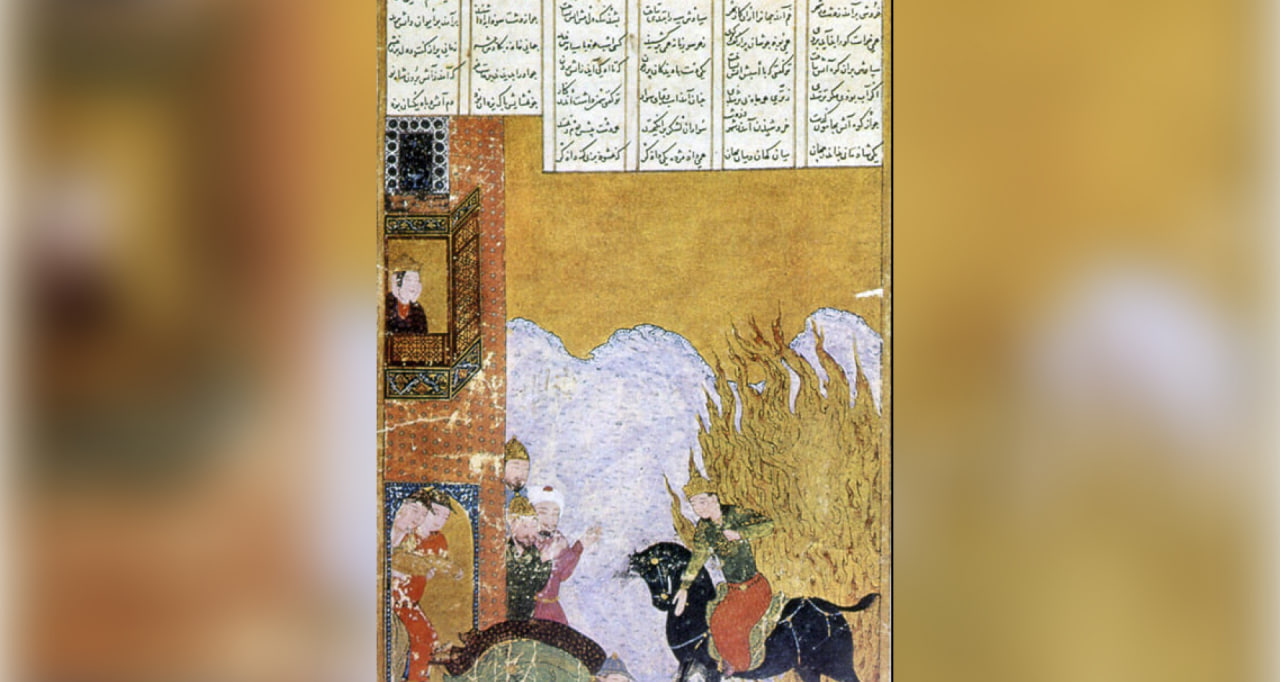Were the earliest examples of the debate genre established during the Timurid era?
🔴 Do you know of a work comparable to the Shahnameh?
🔴 What is the manuscript prepared under the patronage of the Timurid prince Pir Muhammad about?

The period of Amir Temur’s reign (1370–1405) holds a special place in history as one of the eras of rapid advancement in science, spirituality, and culture in the Islamic world. This era witnessed not only great achievements in architecture and politics, but also the creation of immense intellectual and spiritual wealth. In particular, the emergence of the first artistic manuscripts during this time was a direct result of the Timurid cultural policy.
One such rare example is a two-volume manuscript collection, which is planned to be displayed in the “Second Renaissance” section of the exhibition at the Center of Islamic Civilization in Uzbekistan. These manuscripts were prepared under the patronage of the Timurid prince Pir Muhammad (1374–1407) and are of significant literary and philosophical value.
The first volume of the collection contains the renowned Shahnameh by Abul-Qasim Ferdowsi, copied in Shiraz by Muhammad Said Hafiz al-Qari in 800 AH (1397–98 CE). The second volume includes four epic poems from Iranian and Persian literature: Garshaspnama by Asadi Tusi, Shahanshahnama by Ahmad Tabrizi, Bahmannama by Hakim Tusi, and Qushnama by Hakim Iranshah ibn Abulkhay.
Asadi Tusi and his philosophical epic
One of the most remarkable works in this collection is the Garshaspnama, written by Abu Nasr Ali ibn Ahmad Asadi Tusi (circa 1000–1073). Comprising 9,000 couplets, the work is written in the spirit of Ferdowsi’s Shahnameh and holds particular significance as a continuation of the Iranian epic tradition.
The central character of the poem, Garshasp, is portrayed as a legendary hero. Through his battles with dragons, travels to India and Sri Lanka, and encounters with Hindu Brahmins and Greek philosophers, the author conveys ideas of human perfection, the unity of religion and philosophy, spiritual maturity, and heroism.
The narrative features historical, mythological, and philosophical figures such as Jamshid, Zahhak, and Faridun through whom the worldview, collective memory, and moral values of the ancient Iranians are vividly expressed.
Debate qasidas — a contest of intellect and poetic expression
Asadi Tusi’s literary legacy is not limited to epic poetry. Among his contributions are five debate qasidas Arab and Ajam, Muslim and Magian, Night and Day, Spear and Bow, and Heaven and Earth which are considered some of the earliest literary examples of the debate genre.
These works present artistic and logical confrontations between opposing concepts, exploring themes such as nature, religion, and human values through the lens of contemporary ethical perspectives. Through these poems, Asadi Tusi promotes ideas of intellectual freedom, a culture of dialogue, and spiritual harmony within society.
Literary manuscripts of this nature from the Timurid era particularly works like Garshaspnama are regarded as part of the spiritual foundations of the Second Renaissance in the history of Islamic civilization. The Center of Islamic Civilization in Uzbekistan is becoming an important scholarly and cultural institution devoted to presenting this rare heritage to the wider public and deepening appreciation of its literary and intellectual value.
Most read

Over 100 experts from more than 20 countries of the world are in Tashkent!

The Center for Islamic Civilization – a global platform leading towards enlightenment

The museum of the Center for Islamic Civilization in Uzbekistan has been further enriched: unique artifacts from different parts of the world have been presented as gifts











